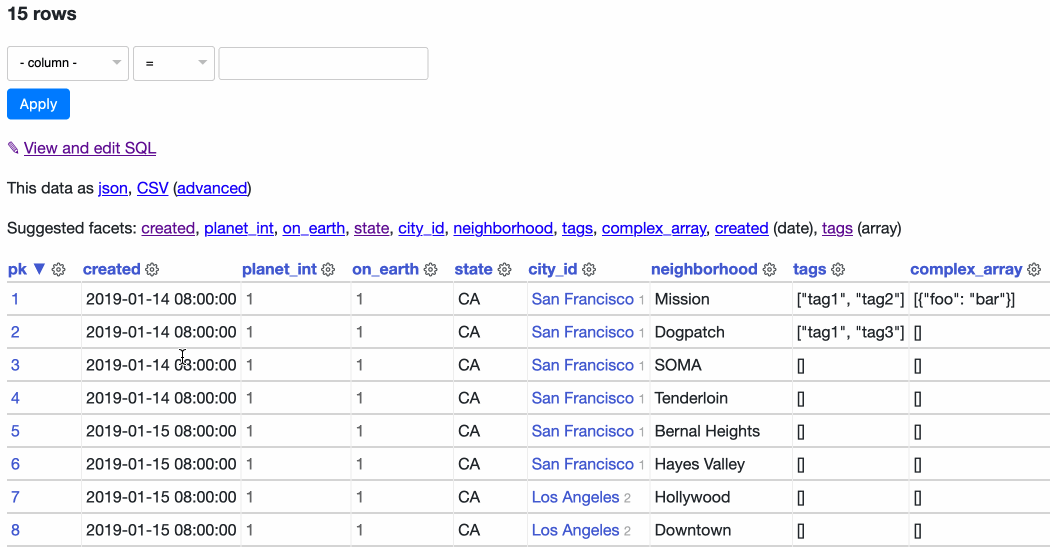5 posts tagged “httpx”
2025
llm-mistral 0.14. I added tool-support to my plugin for accessing the Mistral API from LLM today, plus support for Mistral's new Codestral Embed embedding model.
An interesting challenge here is that I'm not using an official client library for llm-mistral - I rolled my own client on top of their streaming HTTP API using Florimond Manca's httpx-sse library. It's a very pleasant way to interact with streaming APIs - here's my code that does most of the work.
The problem I faced is that Mistral's API documentation for function calling has examples in Python and TypeScript but doesn't include curl or direct documentation of their HTTP endpoints!
I needed documentation at the HTTP level. Could I maybe extract that directly from Mistral's official Python library?
It turns out I could. I started by cloning the repo:
git clone https://github.com/mistralai/client-python
cd client-python/src/mistralai
files-to-prompt . | ttokMy ttok tool gave me a token count of 212,410 (counted using OpenAI's tokenizer, but that's normally a close enough estimate) - Mistral's models tap out at 128,000 so I switched to Gemini 2.5 Flash which can easily handle that many.
I ran this:
files-to-prompt -c . > /tmp/mistral.txt
llm -f /tmp/mistral.txt \
-m gemini-2.5-flash-preview-05-20 \
-s 'Generate comprehensive HTTP API documentation showing
how function calling works, include example curl commands for each step'The results were pretty spectacular! Gemini 2.5 Flash produced a detailed description of the exact set of HTTP APIs I needed to interact with, and the JSON formats I should pass to them.
There are a bunch of steps needed to get tools working in a new model, as described in the LLM plugin authors documentation. I started working through them by hand... and then got lazy and decided to see if I could get a model to do the work for me.
This time I tried the new Claude Opus 4. I fed it three files: my existing, incomplete llm_mistral.py, a full copy of llm_gemini.py with its working tools implementation and a copy of the API docs Gemini had written for me earlier. I prompted:
I need to update this Mistral code to add tool support. I've included examples of that code for Gemini, and a detailed README explaining the Mistral format.
Claude churned away and wrote me code that was most of what I needed. I tested it in a bunch of different scenarios, pasted problems back into Claude to see what would happen, and eventually took over and finished the rest of the code myself. Here's the full transcript.
I'm a little sad I didn't use Mistral to write the code to support Mistral, but I'm pleased to add yet another model family to the list that's supported for tool usage in LLM.
2021
Re-assessing the automatic charset decoding policy in HTTPX (via) Tom Christie ran an analysis of the top 1,000 most accessed websites (according to an older extract from Google’s Ad Planner service) and found that a full 5% of them both omitted a charset parameter and failed to decode as UTF-8. As a result, HTTPX will be depending on the charset-normalizer Python library to handle those cases.
2020
Datasette 0.50: The annotated release notes
I released Datasette 0.50 this morning, with a new user-facing column actions menu feature and a way for plugins to make internal HTTP requests to consume the JSON API of their parent Datasette instance.
[... 792 words]Weeknotes: datasette-auth-existing-cookies and datasette-sentry
Work on Datasette Cloud continues—I’m tantalizingly close to having a MVP I can start to invite people to try out.
[... 701 words]Async Support—HTTPX (via) HTTPX is the new async-friendly HTTP library for Python spearheaded by Tom Christie. It works in both async and non-async mode with an API very similar to requests. The async support is particularly interesting—it’s a really clean API, and now that Jupyter supports top-level await you can run ’(await httpx.AsyncClient().get(url)).text’ directly in a cell and get back the response. Most excitingly the library lets you pass an ASGI app directly to the client and then perform requests against it—ideal for unit tests.
